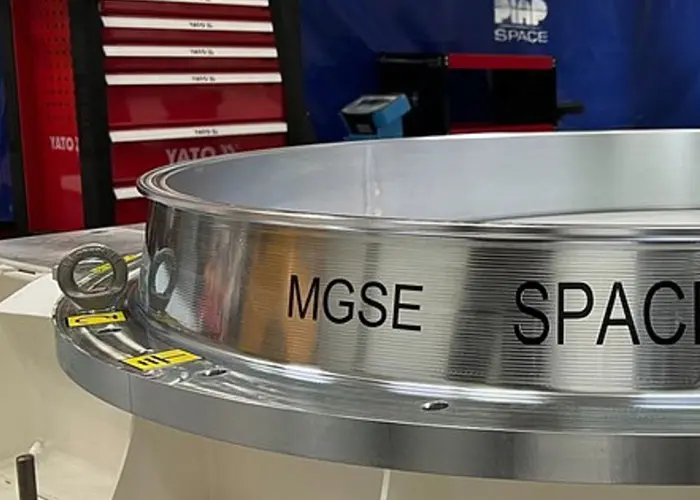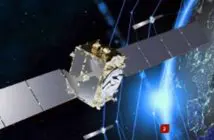
Poland’s PIAP Space has successfully completed the development of a satellite clamping system, known as a clamp band, which has been delivered to Thales Alenia Space for integration and testing as part of the ROSE-L mission for the European Space Agency (ESA).
This marks the first such contract executed by a Polish company and directly procured by an ESA supplier. The project proves that PIAP Space can deliver advanced technologies for international space programs while meeting the stringent quality requirements of ESA, NASA, and other key players in the space industry.
The satellite clamping system, classified as ground support equipment (GSE), is used during the satellite’s assembly, integration, and ground testing phases. It ensures the secure mounting of the satellite throughout these processes before its final placement within the rocket’s payload fairing and launch into orbit. Its primary function is to stabilise the satellite during construction and functional testing, granting engineers unrestricted access to all structural components.
Thanks to high-strength materials and precise clamping force control, the clamp band safeguards the satellite against mechanical damage during these critical stages. This is crucial, as satellites undergo rigorous dynamic and thermal testing before launch to validate their resilience to launch conditions and operational functionality in space.
The clamp band developed for the ROSE-L mission has a diameter of 1,194 mm and is made from stainless steel and aluminium. Its design has been optimised to eliminate the risk of damage to the satellite’s surface while facilitating safe handling during testing and integration. This allows the satellite to be freely rotated and maneuvered during pre-launch preparations, significantly streamlining engineering workflows and enabling a more comprehensive validation of onboard systems.
As part of the project, PIAP Space conducted extensive validation tests, including both assembly trials and static load testing. These efforts aimed to ensure the mechanism meets the highest precision, clamping force, and mechanical load resistance standards. The testing process also included simulations of the overloads and stresses expected during mission preparation and ground-based integration.
During these trials, the clamp band successfully supported a nominal satellite mass of 2.5 tons and was subjected to forces significantly exceeding operational requirements. In static load tests, the structure withstood a force of 125 kN applied at a 2-metre lever arm – equivalent to supporting a satellite mass of over 12.5 tons.
“Through this project, we have demonstrated that we are capable of delivering complex precision mechanisms for global space missions,” said PIAP Space’s Pawel Paśko. “This is a significant step in the continued development of our expertise in space mechatronics.”
The ROSE-L mission (Radar Observing System for Europe in L-band) is part of the European Space Agency’s Copernicus program, designed to provide high-quality Earth observation data. Equipped with an advanced synthetic aperture radar operating in the L-band, the mission will support geohazard monitoring, land use change detection, agriculture and forestry observation, and high-resolution soil moisture measurements. With its ability to penetrate dense vegetation, ROSE-L will also deliver data from regions previously inaccessible to other radar systems.\
PIAP Space’s contribution to this mission marks a key advancement for the Polish space industry. The successful deployment of the clamp band in tests conducted by Thales Alenia Space paves the way for further contracts on both the European and global markets.
Satellite testing technologies are an essential component of mission preparation, and Poland’s growing capabilities in this field strengthen its position as an emerging player in the space sector. Moreover, the expertise gained in this project may be leveraged for future ESA missions and expanding exploration programs, including those targeting the Moon and Mars.





